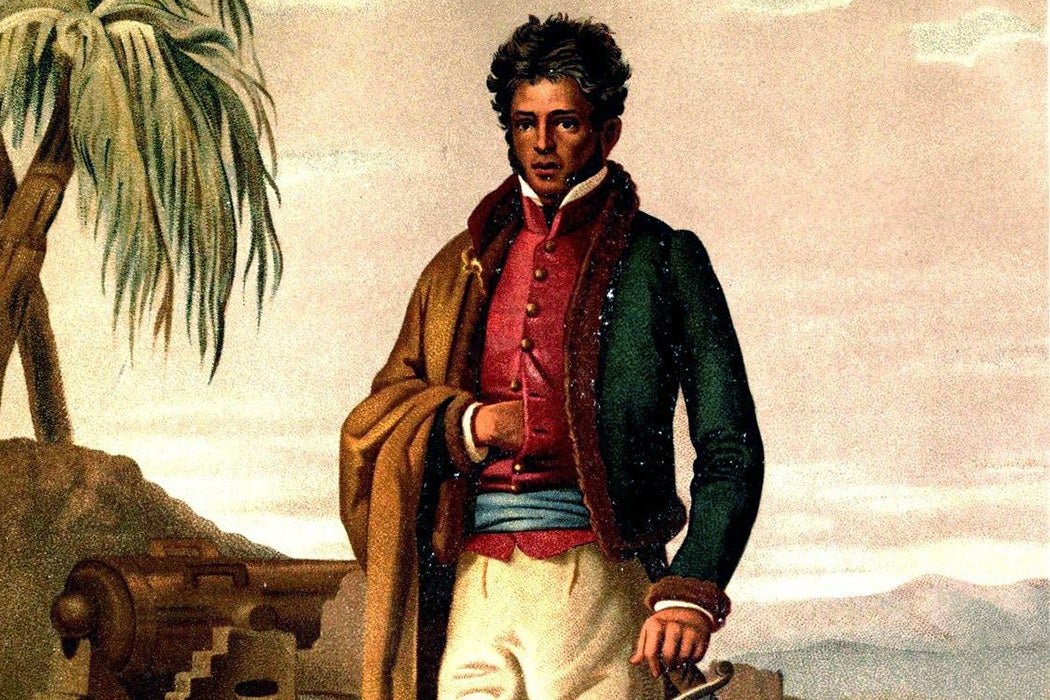In 1810, at the start of the Mexican War of Independence, just over 10 percent of the population of New Spain was Afro-Mexican, according to the Spanish census. They were the descendants of the hundreds of thousands of Africans the Spanish transported to Mexico for slave labor.
By the early nineteenth century, almost all Afro-Mexicans were of mixed race (Indian, African, European) and termed negroes, mulattos, and/or mestizos. Only about one in ten was still bound in slavery, but all suffered under the burden of a caste system that saw “pure” Spaniards, criollos, at the top.
Abolition of slavery and the caste system were both stated goals of early independence leaders like Miguel Hildago y Costilla, often called the Father of the Nation, and José Maria Morelos y Pavón. The latter had African roots.
Mexico’s African-descended people, writes scholar Ted Vincent, had a “special incentive to fight, were encouraged to join the struggle, and provided many participants and leaders” to the cause of Mexican independence. “In the war against Spain the decrees of revolutionary leaders induced Afro-Mexican participation by making minority rights integral to the struggle [while] the decrees against slavery and the caste system alienated many white Mexicans from the independence cause.”
After a long struggle, Mexico won its independence in 1821, but slavery wasn’t formally abolished in the new nation until 1829. The delay was, of course, political: the independence seekers were a politically mixed lot. The leader who first came to power in 1821 was General Agustín de Iturbide, a conservative who spent most of the war fighting for the Spanish before joining the pro-independence side; he declared himself emperor. It was some time before the more liberal, republican forces came to power.
The president who did finally issue the decree ending slavery was of African descent himself. Vicente Guerrero had been a mule-train driver who rose to generalship in the War of Independence. He was the new nation’s second president, briefly reigning before being overthrown in a conservative coup. But in less than a year in office, this man formalized abolition.
Vincent, building on the work of earlier American and Mexican historians, shows that Afro-Mexicans played an outsized role in the independence struggle. In addition to leaders like Morelos and Guerrero, there were foot soldiers. In a struggle where switching sides “was a big part of the war” because most of the “Spanish” forces were conscripted locals, “Afro-Mexicans conscripted by the Spanish switched to the freedom side more often than did other Mexicans.”
This history, however, has been obscured, partly “because insurgent politics were aimed at minimizing race to maximize unity. If anything was to be advertised, it was interconnectedness, as in making it known that General Guerrero, who was visually of African background, spoke many Indian languages and worked well with Indians.”
Weekly Newsletter
This Afro-Mexican heritage stayed obscure, at least until more recent times. Some of the early nation’s laws highlighted the importance of racial equality. One banned the use of racial categories in government documents, including baptism, marriage, and death records. “The subsequent lack of racial counts by census takers in Mexico is one reason little is known of Black Mexico,” Vincent writes.
There is no gainsaying, however, that Mexico abolished slavery three and a half decades before the United States. Notably, however, President Guerrero couldn’t enforce Mexico’s anti-slavery law north of the Rio Grande. American settlers, bringing their system of chattel slavery from the South into that part of Mexico, had grown too powerful. These settlers would break away from Mexico in 1836, declaring a new slave republic before joining the rest of the United States in 1845 as a slave state. They called it Texas.







